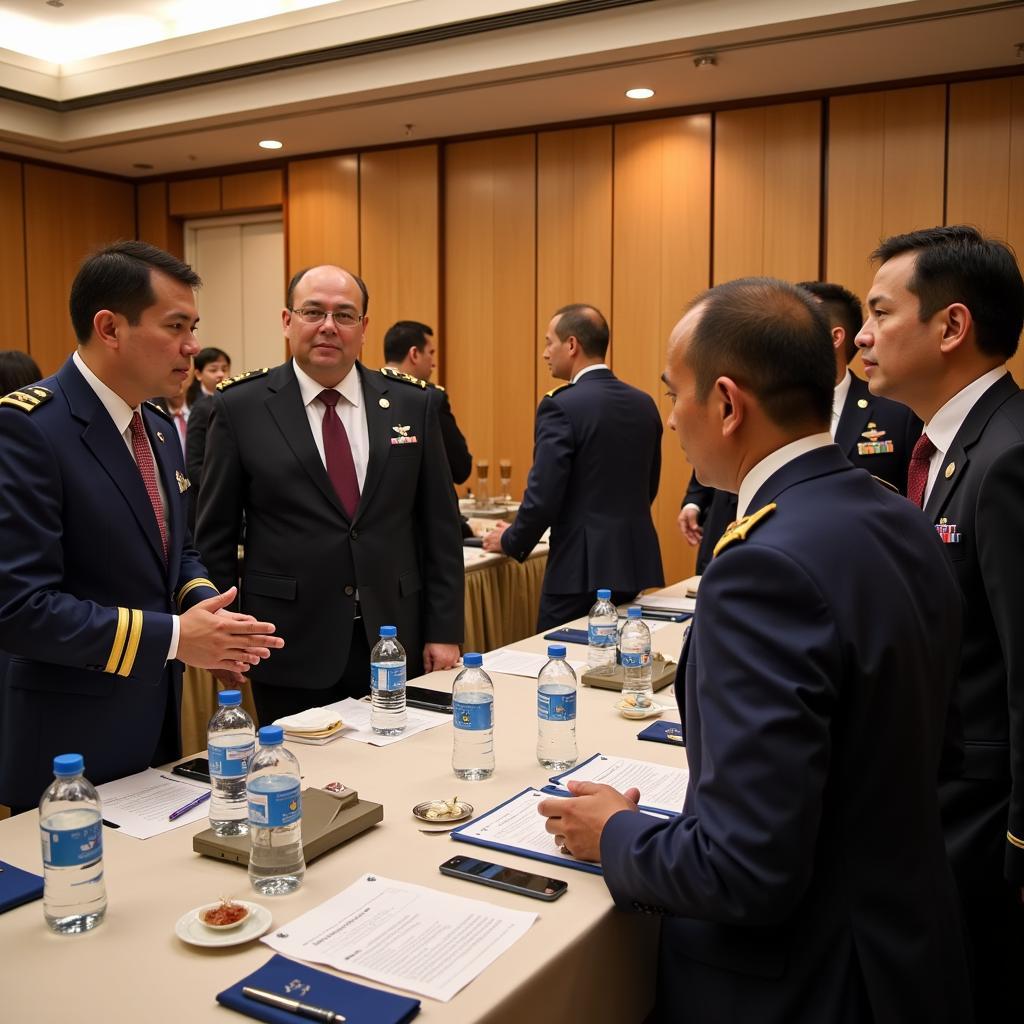The Association of Southeast Asian Nations (ASEAN) and the Sustainable Development Goals (SDGs) are intrinsically linked. The pursuit of the SDGs is crucial for ASEAN’s future, offering a roadmap for inclusive and sustainable growth across the diverse region. This article explores the multifaceted relationship between ASEAN and the SDGs, examining the challenges and opportunities in achieving these global goals.
Aligning ASEAN’s Vision with the Global Goals
The ASEAN Community Vision 2025, with its pillars of political-security, economic, and socio-cultural community building, aligns closely with the overarching principles of the SDGs. Both frameworks emphasize sustainable development, poverty eradication, and improved quality of life for all. This synergy presents a powerful opportunity for ASEAN to leverage the SDGs as a catalyst for regional integration and progress. The interconnectedness of the SDGs offers a holistic approach to development, addressing critical issues such as climate change, environmental protection, and economic inequality.
For instance, achieving SDG 7 (Affordable and Clean Energy) can positively impact SDG 13 (Climate Action) by reducing greenhouse gas emissions. Similarly, progress towards SDG 4 (Quality Education) can contribute to SDG 8 (Decent Work and Economic Growth) by equipping individuals with the skills needed for the modern workforce. asean and un
Challenges and Opportunities on the Road to 2030
While the alignment between ASEAN and the SDGs is promising, significant challenges remain. The diversity of the region, ranging from developed nations to least developed countries, presents unique obstacles. Varying levels of economic development, political systems, and social structures create complexities in implementing a unified approach to achieving the SDGs. However, this diversity also presents an opportunity for shared learning and innovative solutions.
Addressing Regional Disparities
One of the key challenges is addressing regional disparities within ASEAN. Ensuring that no country is left behind requires targeted interventions and customized strategies. This necessitates effective data collection and analysis to identify specific needs and vulnerabilities within each member state.
Fostering Multi-Stakeholder Partnerships
Achieving the SDGs requires collaborative efforts from all stakeholders. Governments, businesses, civil society organizations, and academia must work together to create an enabling environment for sustainable development. asean and united nations Engaging the private sector is crucial for mobilizing resources and promoting innovation. Furthermore, empowering local communities and ensuring their participation in decision-making processes is essential for sustainable and inclusive development.
What is the role of technology in achieving the SDGs in ASEAN?
Technology plays a crucial role in accelerating progress towards the SDGs. From renewable energy solutions to digital education platforms, technology offers innovative tools for addressing development challenges.
How can ASEAN promote greater collaboration on SDG implementation?
Strengthening regional platforms for knowledge sharing and best practices, fostering public-private partnerships, and promoting South-South cooperation are key to enhancing collaboration. ase capgemini logo
Dr. Anya Sharma, a leading expert on sustainable development in Southeast Asia, emphasizes the importance of localized approaches: “While the SDGs provide a global framework, successful implementation requires tailoring solutions to the specific context of each ASEAN member state.”
Measuring Progress and Ensuring Accountability
Monitoring and evaluating progress towards the SDGs is crucial for ensuring accountability. Robust data collection mechanisms, indicators, and reporting frameworks are necessary to track progress and identify areas where greater efforts are needed. asean aiib Transparency and accountability are essential for building trust and maintaining momentum.
Empowering Local Communities
Mr. Budi Santoso, a community leader in Indonesia, highlights the importance of community involvement: “Sustainable development can only be achieved if local communities are empowered to participate in the process. Their knowledge and experience are invaluable.”
How can ASEAN strengthen its monitoring and evaluation frameworks for the SDGs?
Adopting standardized indicators, enhancing data collection methodologies, and promoting regional data sharing are crucial steps for strengthening monitoring and evaluation. ase enrichment inc
Conclusion
The partnership between ASEAN and the SDGs represents a shared commitment to a more sustainable and prosperous future. While significant challenges remain, the region’s collective efforts, coupled with strong leadership and multi-stakeholder partnerships, hold the key to unlocking the transformative potential of the SDGs. By embracing innovation, fostering inclusivity, and prioritizing sustainable development, ASEAN can pave the way for a brighter future for all its citizens. This journey towards achieving the SDGs offers a unique opportunity for ASEAN to solidify its position as a dynamic and resilient regional bloc on the global stage.
Need support? Contact us 24/7: Phone: 0369020373, Email: aseanmediadirectory@gmail.com or visit us at: Thôn Ngọc Liễn, Hiệp Hòa, Bắc Giang, Việt Nam.
